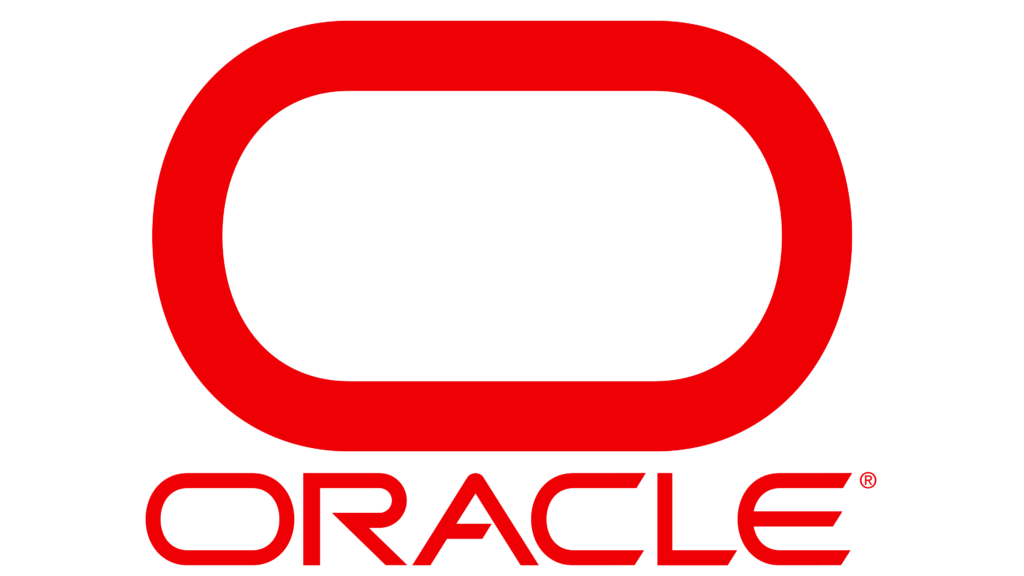First off: This list sucks
This obviously isn’t an exhaustive list. In fact it’s not even a useful list. If you’re in a production environment, and you needed a Linux distribution to be hosted on your server, I really hope you’re not using this as a means to choose a distribution. A lot of lists out there are dedicated for Desktop Linux. Like, what’s the best Linux Distribution for gaming? Why is it Arch Linux? But, I wanted to go over server distributions. Because, I came upon this decision when I was deciding my Linux distribution for this very website. I chose OpenSuSE Leap, but I didn’t realize the potential behind OpenSuSE [used to be hosted on OpenSuSE- now I use Ubuntu for this website… unfortunately] and also… It might’ve not been the best choice for me. So, I wanted to talk about my favorite Linux Server Distributions and what makes them so different and special.
Package Managers
Pacman? Like the game?
Something that most Linux Distributions have are Package Managers. Package Managers are programs designed to download, install, or update packages (in a secure manner). Simply put – they manage packages across your Linux build.
Number 5: Debian

One of the oldest ongoing Linux distributions established by Ian Murdock and community supported by the Debian Project. It’s the first Linux distributions to use a package manager – dpkg in 1993, which APT (Advanced Package Tool) proceeded the concept. Dpkg is still used in Debian. It’s an extremely stable Linux distribution. It’s a solid choice for servers – as it’s stable releases are vetted through the Debian releases: Unstable, Testing, and Stable. Where packages are introduced through the Unstable then tested respectively through the succeeding release types. Unfortunately, this brings a negative side upon its well-known stability. Packages become obsolete by the time it hits the Stable release. It’s very common for working packages to become a couple versions behind the newest version on the Stable release – and it would be very ill-advised to use a production server with either Unstable or Testing Debian releases as the operating system. Especially when up-time is one of the major concerns for production environments. Debian is considered the “father” of many derivatives like Ubuntu, Kali Linux, GML, Purism, and Tails.
Here’s a list of major organizations that use Debian: https://www.debian.org/users/
Package Manager: APT
Release type: Fixed – Every 2 years.
Positive: Well-known for its unbreakable stability.
Negative: Many packages become obsolete.
Number 4: Ubuntu

For 4th place I think I find it poetic that Ubuntu takes the place after Debian. I think a lot of people might disagree with this choice – and in the back of my head, it doesn’t feel right. But it is. And I’ll tell you why. Now before I continue, I’ll reiterate the disclaimer – every server has its purpose, and each use case is dependent on what’s needed. Each person may need one Linux distro over the next for their specific purposes. Debian might be better in their case, or Ubuntu might be better. This list isn’t exhaustive, it’s an opinion piece from an nonintellectual. Anyways, Ubuntu is a really hot topic when it comes to Linux. Almost anyone that’s encountered Linux has heard of Ubuntu. The first release of Ubuntu was 20th October 2004 – it’s maintained by Canonical – which, controversially is a private company, rather than the traditional community supported Linux distributions. Hate it or love it – Ubuntu has more so become the poster-boy for Linux, as it’s the most popular Linux distribution. This isn’t by mistake. As it’s a jack-of-all-trades Linux distribution. If you are a simple Linux user, Ubuntu is extremely easy to navigate with it’s rounded GUI. Conversely, if you’re a system administrator or even system engineer, Ubuntu makes it easy to rapidly deploy and manage a production server. Personally, I’ve never used Ubuntu as a production server, nevertheless, the documentation and package support is plenty. If you’re jumping into Linux, Ubuntu is the easiest to get into.
Here’s an infograph of organizations that use Ubuntu: https://ubuntu.com/blog/ubuntu-is-everywhere
Package Manager: APT, Snappy
Release Type: Fixed – 2 years LTS | 6 Months Interim.
Positive: Well known – meaning good documentation. Very easy to use.
Negative: Some packages can only be installed as a Snap.
Number 3: Rocky Linux

Rocky Linux is relatively new – but it’s not at the same time. Rocky Linux was created to replace CentOS, which still exists – but it exists as a separate entity. For me to explain everything, I need to explain Red Hat Enterprise Linux (RHEL), it’s an open source Linux distribution, however – unless you’re a developer, you’ll find that it’s hard to find an install from the official RHEL website like you would most other distributions. That’s because, RHEL offers a support package, and within the support package is RHEL compiled for use. Anybody can find the source code and compile it themselves – but it’s an extremely long and difficult process for one person to do. That’s where CentOS came in, they compiled the source code for RHEL and made it available for download. RHEL acquired CentOS in 2014 – but made no efforts to change anything with CentOS until recently. They basically moved CentOS upstream (kind of like Debian Testing) and changed the name from CentOS to CentOS Stream with continuous updates like Arch Linux instead of fixed updates. Since, CentOS became the testing distro, this left a hole for the Linux community for free and open source compiled RHEL. That’s where Rocky Linux filled in. Created by one of the founders of CentOS – Gregory Kurtzer – and the name as a tribute to the co-founder of CentOS – Rocky McGough. Before 2021 – CentOS was the go-to choice for most server applications, and now… Post 2021 – Rocky has taken the mantle. If this blog was created two years ago, CentOS would be in the same place.
Since Rocky Linux is new, here’s an infograph that shows CentOS’s marketshare: https://enlyft.com/tech/products/centos
Package Manager: DNF/RPM
Release Type: Fixed – Unknown next release
Positive: It’s ready compiled Linux operating system that’s enterprise-ready.
Negative:Rocky Linux is basically brand new – at time of writing. It’s a little overwhelming for new system administrators. Especially with no package support other than forums.
Number 2: OpenSUSE & SLES ![]()

OpenSUSE Leap and SUSE Enterprise Linux Server (SLES) are really similar. SLES is basically the time-tested more stable version of Leap. That doesn’t mean, however, that Leap is unstable – far from it. Leap is on a fixed release basis with continual support for about 18 months after release. Each release is tested before being placed on Leap with Tumbleweed being upstream from Leap. Leap’s stability rivals many fix released Linux distributions and in my opinion beats a lot of them. The differences between Leap and SLES is that Leap is upstream from SLES and the SLES repositories are more limited – with the notion of stability over higher package support. Oh and one more thing, SLES offers long time service support – which offers 13 years of maintenance and security patches, along with technical support. Okay – like, but why is it the second-best server distribution? Well, I’ve got 4 letters for you – Y A S T. What is YAST? Yast stands for Yet Another Setup Tool. SUSE had a history of having a high amount of engineers in its project – which pushed it to the shelves (back when you could buy distros from dvds at the store). But YAST, is like an engineer in your Linux operating system. It makes everything so easy. The first iteration was a TUI like menu, being able to change simple things like IP address, to managing repositories, to setting up an entire LAMP (Linux,Apache,MySQL/MariaDB,PHP) stack. For real? Yes, dude – YAST is extremely powerful. The second iteration of YAST or YAST2 is completely GUI. But I tend to use YAST more often in my server configuration because I can use it within a SSH instance.
Package Manager: Zypper
Release Type: Fixed – 18 months (OpenSUSE) 3-4 years (SLES)
Positive: YAST, it’s the best thing to grace System Admins. Super long-time support through SLES support packages.
Negative: If you’re using OpenSUSE – 18 months is a pretty short lifecycle for a server. And you have to pay for SLES
Honorable Mentions
You can make a server out of any Linux distribution. As long as the source code is available – you can make it work. It really depends on how hard you have to work, and how stable it is. You can smack Apache on Arch Linux and call it a day. But if you want to update your kernel or install security updates – you might run into stability issues after every update. Especially if you want to run MariaDB and PHP as well. I’ve got three possible alternatives that I think are pretty cool – that run well underneath ease of administration and stability.
Oracle Linux

Oracle – it’s basically like Rocky Linux and the former CentOS, but with an Oracle service package as well. But wait… That’s like RHEL? Well, yes – but there’s more. One of the biggest features of Oracle is the Unbreakable Enterprise Kernel or UEK. Generally, Linux users use the Linux Kernel with slight changes and configurations. The UEK tracks the mainline Linux Kernel and is used for performance with all the new bells and whistles. Oracle boasts that it’s the same kernel they use for their own systems. There are more Oracle proprietary products included with it’s free-to-use distribution. It’s a solid choice for most servers.
Slackware

I might turn a lot of heads by saying Slackware. But it’s a very minimalistic and simple Operating System with A LOT of personality. The best thing about Slackware is its package manager… Or lack there of. Slackware was created before dpkg – or the first package manager. In fact, it’s the oldest Linux distribution that’s still being actively being maintained. The lack of package managers make it difficult for people to administer Slackware – but the pay off is worth it. As a Gentoo user (honestly – close to former – it’s hard to keep up) the amount of intimacy you can achieve with your Linux machine is incredible. Sounds a little scandalous, but having a system you’ve primarily built from source feels like you’re living in a house that was built with your own hands. Because of the extreme minimalistic nature of Slackware, it leaves the vulnerability surface area extremely small – and gives the administrator the power to set everything up. To be honest – in terms of performance, security, and reliability Slackware has the potential to beat all the Linux distributions that are on this list, but it all comes down to the administrator or team of admins. But again, that’s with most Linux distributions. The only reason it’s not on the top 5, is because you can do a lot of the same things with significantly less work with other distributions that were meant to be used in a server environment. Time is money guys. But if you need to squeeze more performance and efficiency out of a machine – Slackware is for your hardware.
Number 1: Red Hat Enterprise Linus (RHEL)

I don’t think I surprised anyone about this being my number one choice. I’ve probably mentioned RHEL about 10 times in this post without even putting it on the list yet. The Red Hat line or rather Red Hat Enterprise Linux (RHEL). Red Hat Linux is the crème of the crop for Linux servers. It is the de-facto Linux server. Started in 1994 with it’s initial release: “Halloween” – as it was appropriately debuted in October. There’s a lot of history about RHEL between then and now – but it was acquired by IBM in 2019. It is the grand-pere of many server based Linux distributions for good reason. It is the definition of enterprise-ready. Even the upstream desktop version of RHEL – Fedora – has many supporters and users. Fedora is actually one of my personal favorite operating systems for the Desktop (not my favorite though), but it is the workhorse for Linux Torvald, the creator of Linux. (Sauce: https://droidrant.com/what-linux-does-linus-use/) What’s more is that RHEL also has a suite of technical certificates that you can study and pass. But what’s the point? It seems like every other tech company and their mom has a technical certificate. Well, well, well – RHCSA or Red Hat Certified Systems Administrator and Red Hat Certified Engineer are considered as some of the best Linux certifications out there. You doubt me? Ask your system admin.
Package Manager: DNF/RPM
Release Type: Fixed – Every 3 Years
Positive:It’s THE Linux distribution for servers. Extremely optimized for reliability, efficiency, and security.
Negative: It’s not free… check note
NOTE – Red Hat as of June 2023, they technically kept RHEL open-source by using CentOS stream as the target build rather than a Git repository that used to host the RHEL source code.

Thank you for the awesome content, it’s always appreciated